An introduction of Figma Kurisu Makise's articulation design after the previous posting. ^^
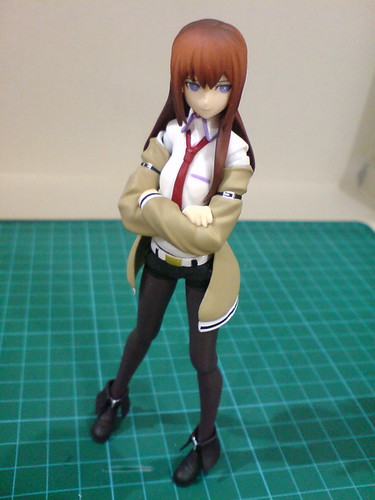
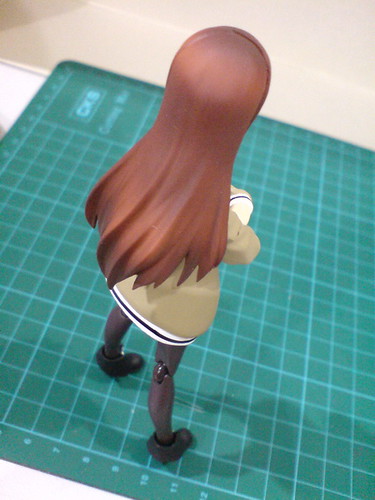
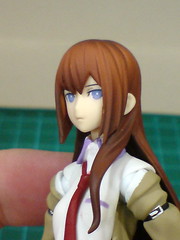
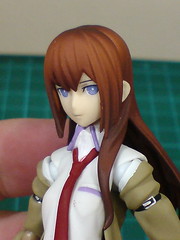
Between downward and upward tilts for the figure's head, it's pretty much a no-brainer that only the former is possible, given the large hair part that blocks the neck joint from being bent upward.
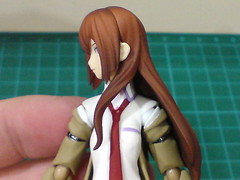
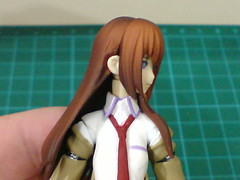
The head can of course be swiveled to the left or right.
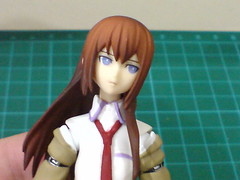

Using the neck joint's peg inside the head, horizontal tilt is not a problem for the head as well.

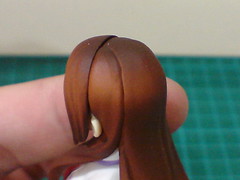
(Left) One of Kurisu's unique character design points: a lock of hair behind her left ear that extends to below shoulder level. It's made of soft plastic and won't obstruct the head's movement.
(Right) Very obvious patching of said lock of hair on the figure's head. ^^
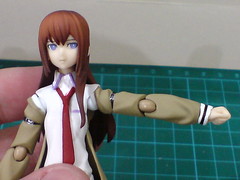
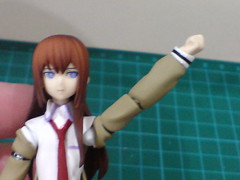
Standard range of upward lift for the shoulder from the side of the body. Kurisu's sleeve at shoulder level offers what I would consider minimal obstruction to the arm's bending range, but to overcome that limitation, the upper arm can be swivelled around, and the additional space of what normally would be the armpit of the figure can be utilized to give her an even wider upward bend. ^^

The ball-swivel combo joint for the shoulder that can be found on most Figmas.
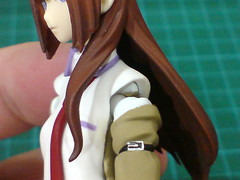

The ball-joint end of the shoulder joint allows the figure to (1, left image) have her shoulder lifted or lower, and (2, right image) swing her arms forward/backward.

Standard more-than-90-degree bending range for the elbow.
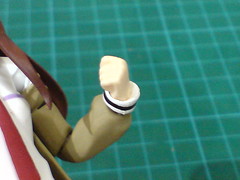
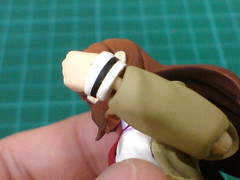
Hinge-swivel combo joint for the wrist using the hand units' pegs.
(Left) Despite being designed as separated parts on the jacket sleeves, the wrist pieces still block the hands' movement it seems. ^^;
(Right) Another troublesome feature of the wrist pieces being separated parts: since they do swivel around the hand units' peg joint, there will be a gap between the part and the jacket sleeve if you don't line them up properly. ^^;
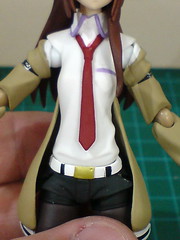
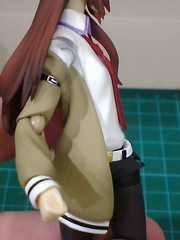
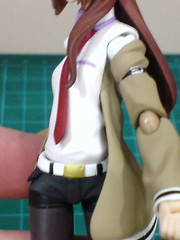
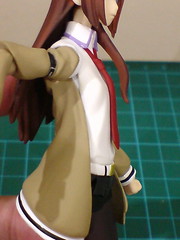
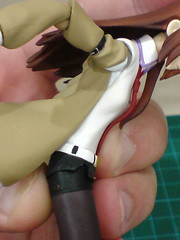
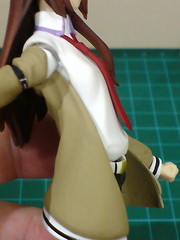
A ball-type joint gives the waist a very wide and flexible range of posability.


Despite remain hidden in all views due to the jacket, Kurisu's white belt, and belt loops on her shorts are nicely painted. ^^

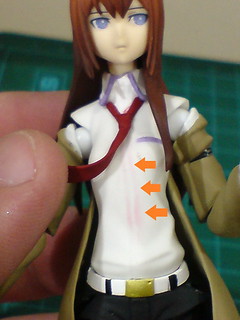
The lower half of the red tie in front of the figure's chest is a separate piece. Unfortunately, having a painted red tie on a white shirt almost guarantees that the latter is going to have a fair share of paint stain from it, and mine is of no exception. ^^; The stain beneath the tie is not really a concern, since it's not visible in pretty much all views of the figure anyway. The stain on the collar area is a bit disappointing to see though. ^^;
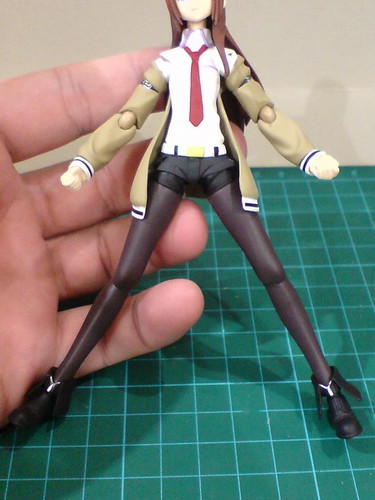
In "normal mode", this is how far the figure's legs will go when they are expanded to the sides.
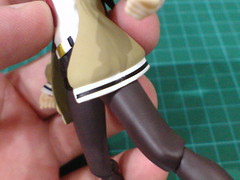
The figure's "normal mode" refers to the legs' movement being limited by the jacket when they are bent to the sides. ^^;
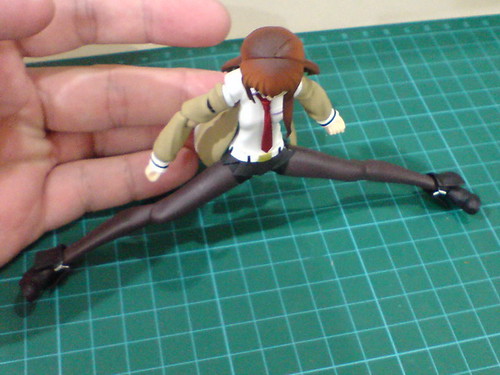
With the waist bent, the legs can be set free of the jacket's limitation, which will allow them to make full use of the hips' ball-type joints to achieve a much wide expansion to the sides. ^^
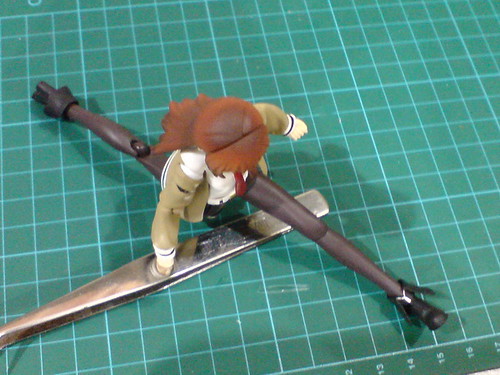
The figure can even perform a full forward split very easily. ^^

Kurisu's shorts actually have splits on them to compliment the legs' articulation range.
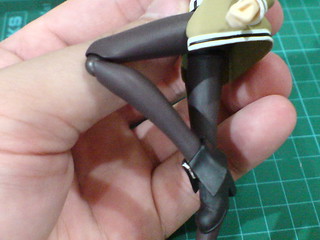
The knee enjoys the same bending range as the elbow.
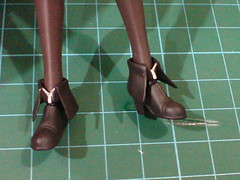
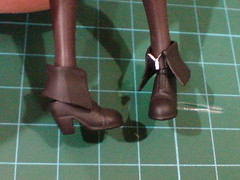
Normal swivel, ...


... and forward-backward bends for the ankle joints.
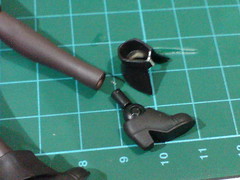
Each boot is split up into top and bottom halves, with the ankle joint in the middle connecting them, but rather than to help with the ankle's articulation range, this is done as the simplest way to incorporate a joint as part of Kurisu's boot I think. ^^
Normal would be the best word I could think of to describe Kurisu's articulation design I think. ^^ There's really nothing extraordinary in the types of joint used, and the articulation range enabled by them on the figure. Then again, given the character design of Kurisu, being normal is just right for the overall design. ^^
Some action poses of Figma Dorothy after the introduction of the figure's articulation design:
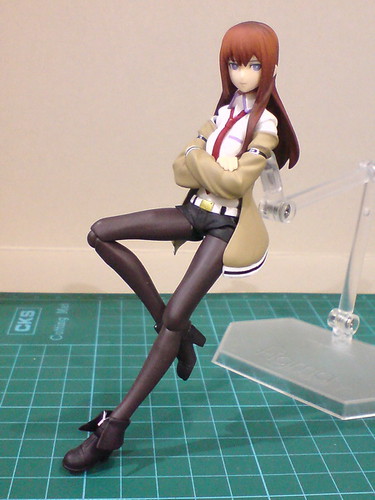
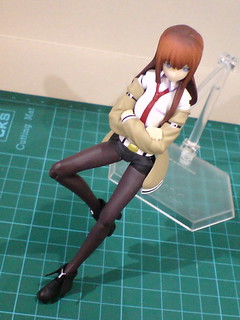
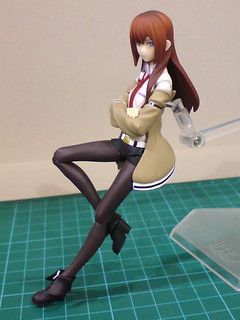
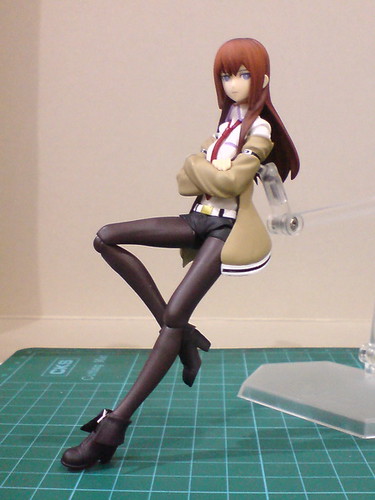
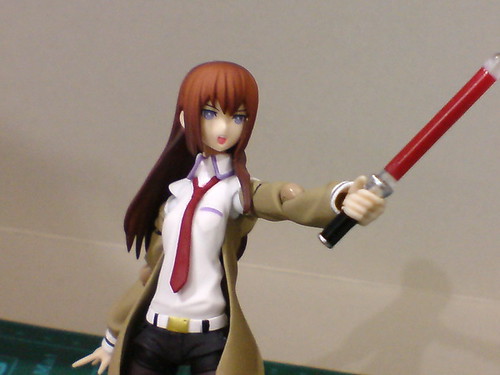
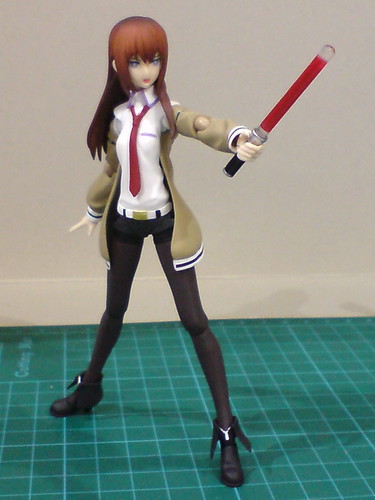


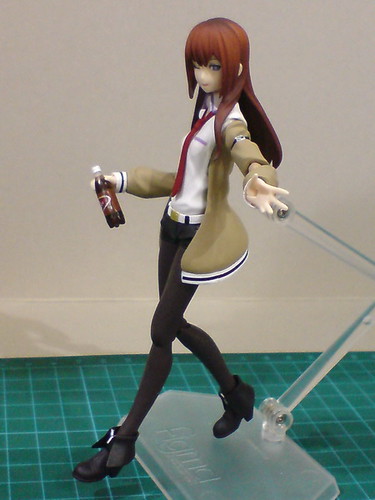

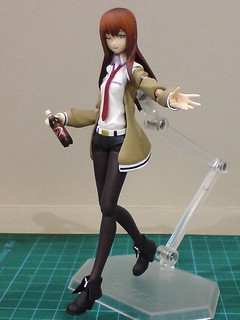

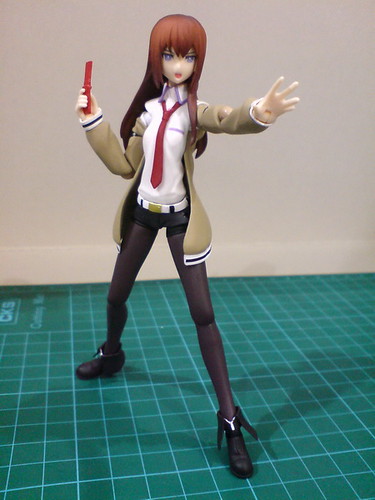

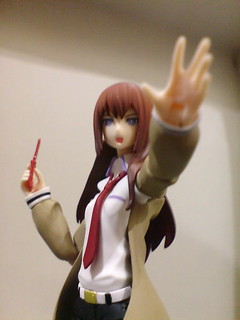
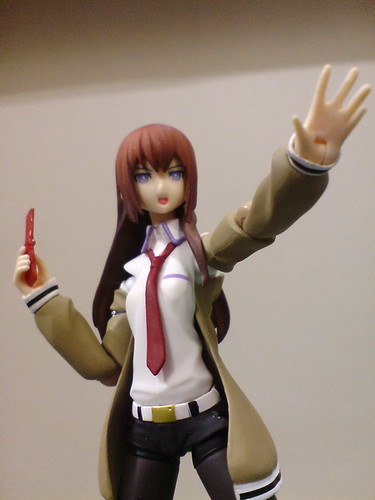
More action poses from Figma Kurisu in the next posting, which will be the last one for this review series. ^^




No comments:
Post a Comment